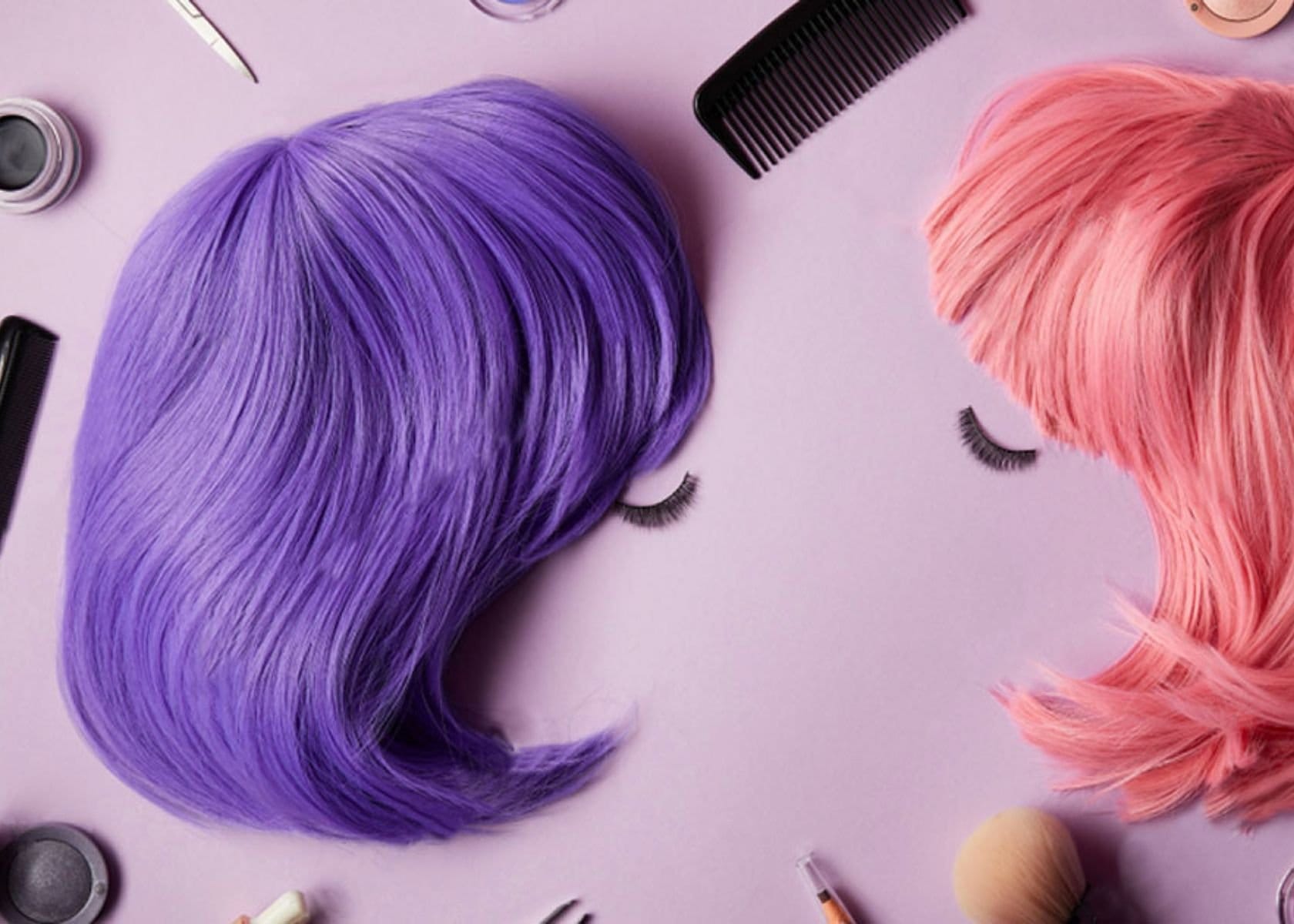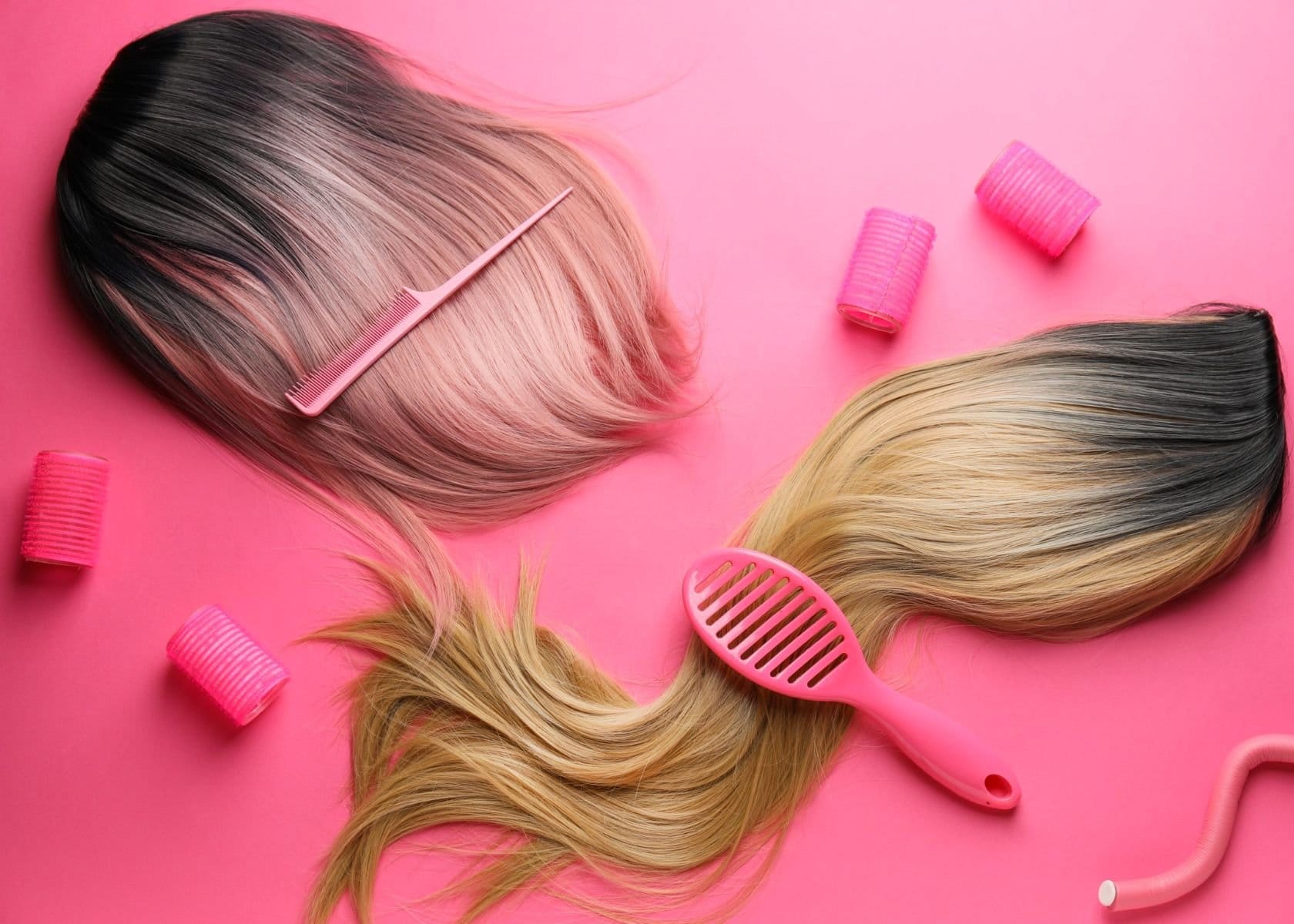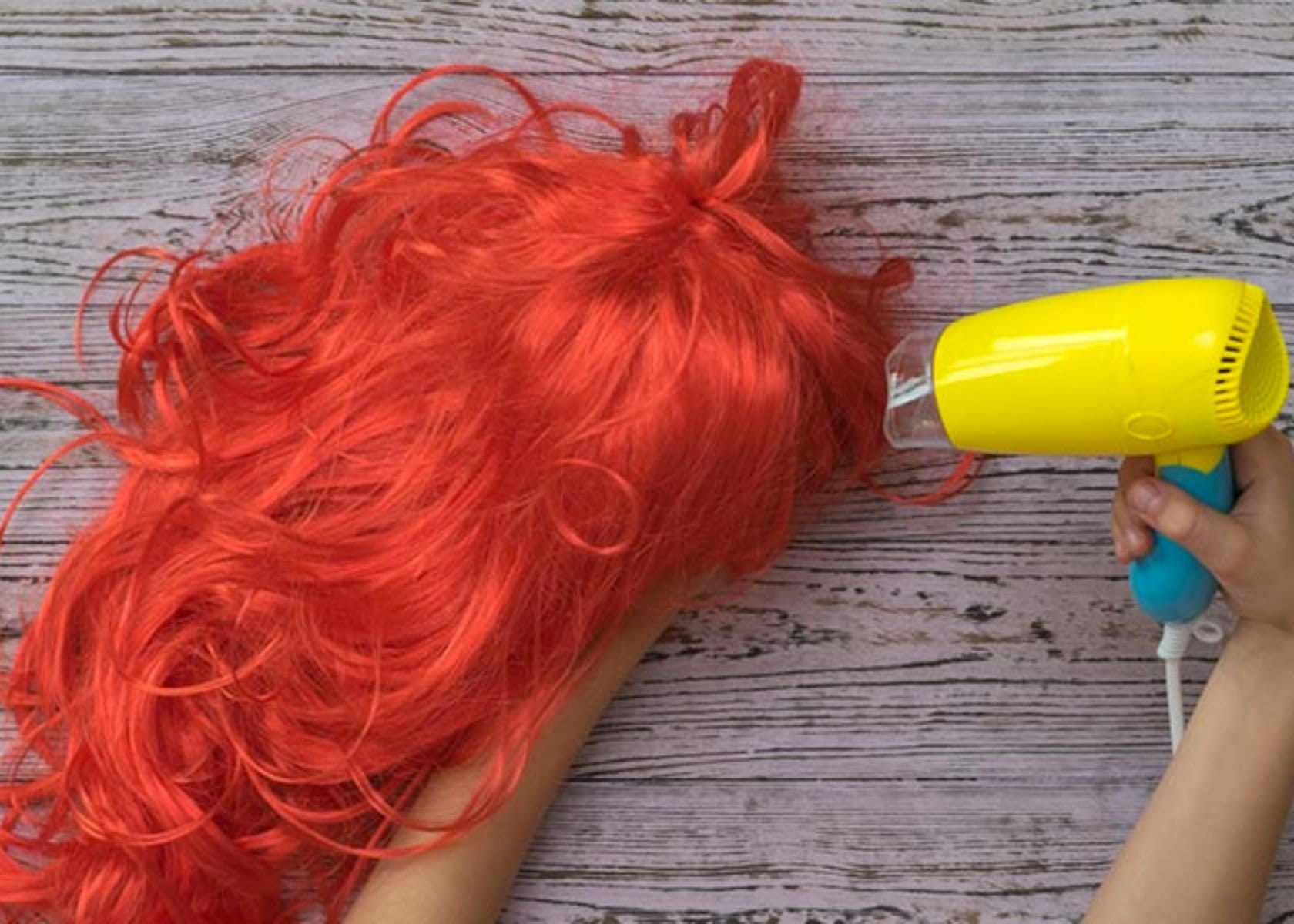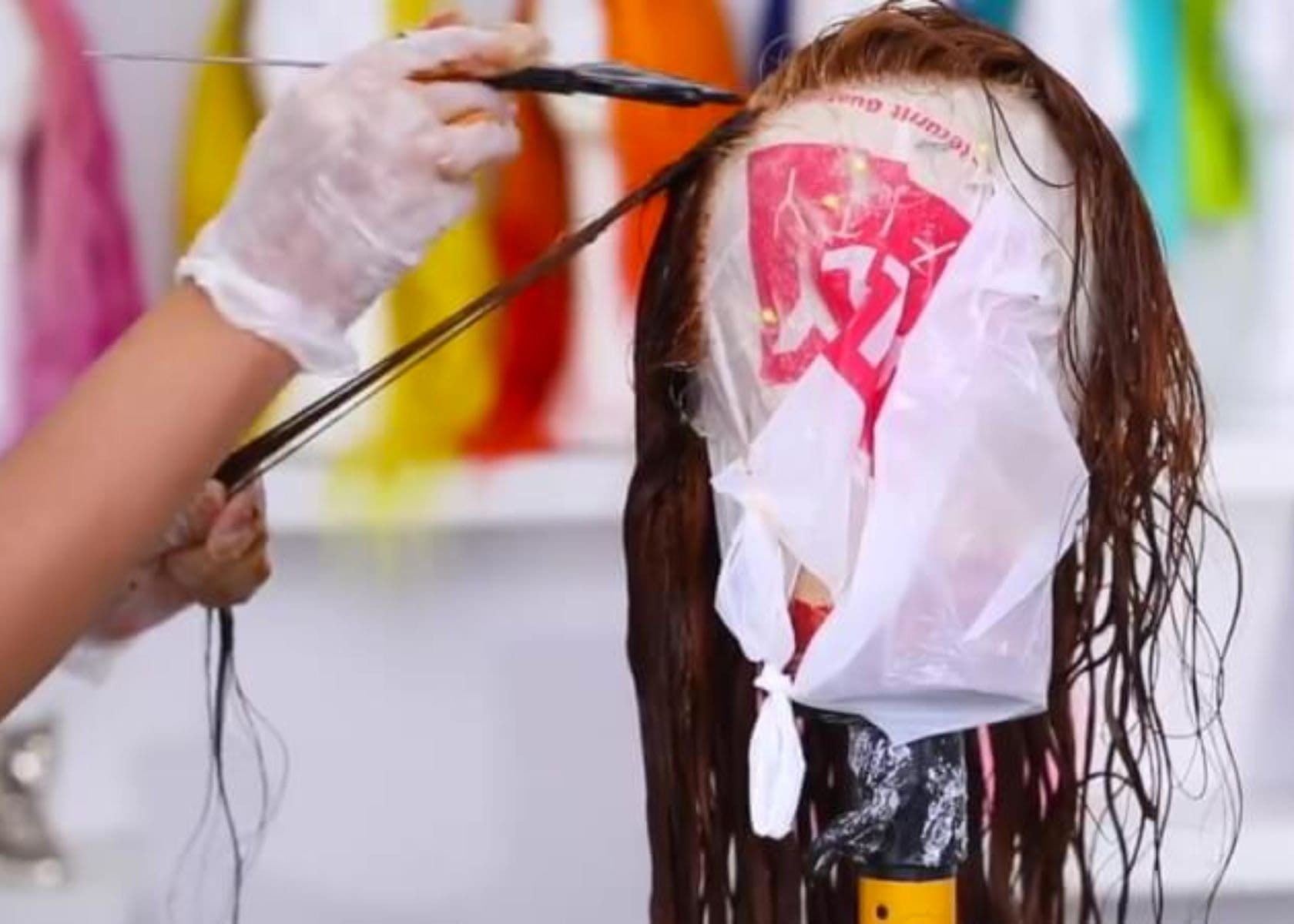Coloring your look with a fresh shade is exciting, and when it comes to human hair wigs, the possibility of changing colors brings even more fun. Just like natural hair, these wigs can be dyed, offering limitless style transformations.
The process involves starting at the roots of the wig and moving towards the ends so every strand gets covered evenly.
Keep in mind that clean and dry wigs laid out flat set you up for success before dipping into any sort of dyeing adventure. By sticking closely to manufacturer guidelines throughout each step of applying, processing, washing, and drying your human hair wig, you ensure vibrant results without damage.
Adventures in coloring aren't free from pitfalls; hence, caution is paramount when handling delicate areas like lace, which could easily get stained or damaged if not protected properly during dyeing.
Now imagine wearing your transformed wig – a statement piece reflecting both personality and style – as we guide you through this colorful journey. Get ready to bring some life back into your synthetic hair wigs.
- You can safely dye human hair wigs by choosing colors darker than the wig’s original shade to avoid damage from bleach.
- It's best to use virgin human hair wigs for dyeing because they have not been processed and are more receptive to color.
- Apply dye starting at the roots and then down towards the ends for an even application, and be sure to protect lace components from staining.
- After applying the dye, rinse your wig gently with cool water until it runs clear, press out excess water with a towel, detangle with a wide-tooth comb, and let air dry on a stand or mannequin head.
- Select dyes that are made specifically for human hair fibers to prevent damaging the wig, and follow mixing instructions on the packaging carefully.
Can You Dye a Human Hair Wig?

Moving from the basics of wig care, let's delve into the possibility of customizing your look by dyeing human hair wigs. Absolutely, you can give your human hair wig a fresh, vibrant color.
It’s important to select a hair color darker than the original shade because lightening it with bleach could lead to damage. Virgin human hair wigs are ideal for this purpose since they haven’t been processed and tend to take on dyes more willingly.
Careful application ensures an even result without compromising the integrity of the wig. Start at the roots when spreading dye through strands and work toward the tips for thorough coverage.
Following product instructions meticulously is key — mix your dye correctly and avoid over-processing by keeping an eye on development time. Remember to handle your dyed wig gently during cleaning; lay it flat after washing to prevent any distortions in shape or texture as it dries.
With these practices in hand, personalizing a human hair wig through coloring becomes both doable and enjoyable.
How to Dye a Human Hair Wig at Home?

Dyeing a human hair wig at home is possible with the right tools and techniques. Knowing how to choose the right color, mix the dye, and apply it properly will help you achieve your desired result without damaging the wig.
Things to Know
To dye a human hair wig, there are some important things to know:
- Choose a semi permanent hair dye color that is darker than the wig itself, as bleach in the dye can damage the hair.
- Avoid lightening a human hair wig, as bleach can be damaging to the hair.
- Select a hair dye color opposite to your skin tone to achieve the desired look.
- For those with warm skin tones, trying a cool shade is recommended, and vice versa.
- It is possible to dye a human hair wig darker to achieve the desired color without causing damage.
Choosing the Right Color and Mixing Dye
Selecting the appropriate hair dyes color is crucial for achieving the desired result. Consider choosing a shade darker than your wig to prevent potential damage from bleach. When mixing the dye, ensure to follow the package instructions carefully, especially when combining it with the developer.
Brushing the dye into your wig evenly and allowing it to process according to instructions will help you achieve optimal results.
It's equally important to bear in mind that natural virgin human hair wigs are more receptive to dyes due to their lack of processing. Starting at the roots and working down towards the ends when applying dye is essential for even saturation.
Additionally, laying out a clean, dry wig on a flat surface before applying dye ensures effective and even application throughout. Achieving successful results ultimately depends on taking these factors into consideration.
Steps for Dyeing a Human Hair Wig

After choosing the right color and mixing the dye, the next step is to apply the dye to your human hair wig. Once applied, wash and dry the wig according to the instructions provided with the dye. The wig dyeing process may seem difficult, but if you do it the right way, it is actually easy.
Applying Dye
To apply dye to a human hair wig, follow these steps:
- Prepare the dye mixture according to the package instructions and use a brush to apply the dye evenly from the roots to the ends of the entire wig.
- Ensure that all strands are fully covered with dye, and gently massage the color into the hair to achieve an even application.
- Use clips to separate sections of the wig for easier application, making sure not to miss any areas while applying the color.
- Pay special attention to avoiding staining the lace of the wig during the dye application process by using a gentle touch and wiping off any excess dye immediately.
- Allow the dye to process for the recommended time as per package instructions, ensuring it is evenly applied throughout and checking for consistent color saturation.
Washing and Drying Your Wig
After the dye has been processed, carefully rinse the wig with cool water until the water runs clear. Gently squeeze out any excess water from the wig without twisting or wringing it.
- Place the wig on a clean towel and gently press to remove more water.
- Use a wide-tooth comb to detangle the hair while it is still damp.
- Allow the wig to air dry on a wig stand or a mannequin head to maintain its shape.
- Avoid using heat tools on the wet wig, as it can cause damage.
- Once completely dry, style the wig as desired using low heat settings on styling tools if needed.
Tips for Dyeing a Human Hair Wig

When dyeing a human hair or synthetic wig, it’s important to choose the right dye and prepare your wig properly to avoid damage. Protecting the lace of the wig during the dyeing process is also essential for achieving a successful result.
Choosing the Right Dye
To choose the right dye for your human hair wig, consider selecting a color that is darker than the wig's original shade to minimize potential damage from bleach. If you have a warm skin tone, opt for a cool shade and vice versa to complement your complexion.
When dyeing a human hair wig, choose virgin wigs in natural colors as they can easily accept hair dye due to being unprocessed. Ensure you follow the package instructions to mix the dye with the developer and apply it starting at the roots and working your way down to achieve an even saturation.
Consider choosing a color darker than your human hair wig's original shade to avoid damage from bleach when coloring. It’s important not only to achieve beautiful results but also to protect both hair and scalp during this process.
Preparing Your Wig
- Begin by thoroughly detangling the wig using a wide-tooth comb or wig brush to ensure an even application of the dye.
- Protect the lace and cap of the wig by applying a layer of petroleum jelly or a protective barrier cream along the hairline and around the edges where the dye may come into contact.
- Use a gentle shampoo to wash the wig, removing any product buildup or residue that may interfere with the dye's penetration.
- Allow the wig to air dry completely before beginning the dyeing process to ensure that it is clean and ready for coloring.
- Place the wig on a flat surface or mannequin head to secure it in place and prevent any shifting during the dye application.
- Section off the hair into manageable parts using clips, ensuring that each section is evenly distributed for consistent color coverage.
- If you are working with a lace front wig, be extra careful not to get dye on the lace, as it can be challenging to remove, affecting its natural appearance.
Protecting the Lace
To protect the lace when dyeing a human hair wig, it's important to apply petroleum jelly or a barrier cream along the hairline and around the lace. This will prevent any accidental dye from staining or discoloring the delicate lace material.
Additionally, using a small brush to carefully apply the dye along the edges of the wig can help avoid contact with the lace, ensuring that it remains undamaged and unaffected by the coloring process.
After applying petroleum jelly and being careful with application, it's crucial to gently clean off any excess dye from the lace immediately using a damp cloth. This will prevent any residual color from seeping into the delicate lace fibers during processing.
By taking these precautions and being mindful of protecting the lace during the dyeing process, you can ensure that your human hair wig retains its natural look while achieving your desired color transformation.
Can You Dye Human Hair Wigs - FAQs
Dyeing a human hair wig allows you to refresh the color or achieve a totally new look. However, improperly dyeing a wig can result in damage. As you consider updating your wig color, you likely have some questions. The frequently asked questions below provide key information on properly preparing, dyeing, and caring for a dyed human hair wig.
Can you dye human hair wigs just like regular hair?
Yes, you can dye human hair wigs using similar methods to dyeing natural hair, but always be gentle to avoid damage.
What kind of dye should I use for my human hair wig?
It's best to use professional hair dye for wigs, specifically made for coloring virgin or natural human hair wigs. Dyeing dark hair synthetic fibers hair extensions is recommended only if the manufacturer allows it to do so.
How do I color my human hair wig without harming it?
To color your wig safely, follow the instructions carefully and use techniques that minimize the risk of damage. Dyeing at home? Be sure not to over-process and always condition after.
Are there special tips for coloring a wig at home?
Definitely! Always test the color first, apply evenly, don't rush the process, and after coloring, wash gently with safe products designed for dyed wigs.
Is it possible to bleach a human hair wig before dyeing it?
While bleaching can prepare your wig for a new shade by lightening it first, make sure you follow a safe method or consult with professionals to avoid damaging the fibers.
Can synthetic wigs be dyed in the same way as human hair ones?
Nope—synthetic wigs usually can't handle regular dyes due to their artificial fibers; specific dyes and careful techniques are needed so they don’t get ruined. Synthetic wigs have to be dyed with a fabric dye instead of natural human dye.
Conclusion
Dyeing human hair wigs is achievable with the right techniques and precautions. The practical tips provided offer a straightforward and efficient process for successfully dyeing your wig at home.
By implementing these strategies, you can significantly impact the appearance of your wig without causing damage to the hair fibers. Explore additional resources or professional services to further enhance your understanding of dyeing human hair wigs.
Empower yourself with the knowledge to transform and customize your wigs according to your preferences and unique style. In the comments below, share with us how you dye a human hair or synthetic hair wig without any trouble.
Read More About Human Hair Wigs





